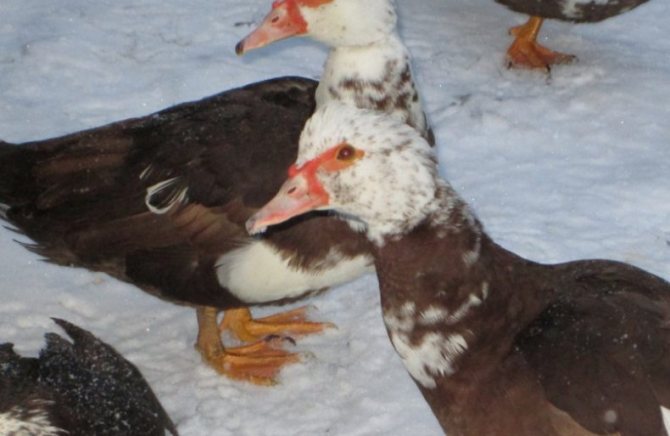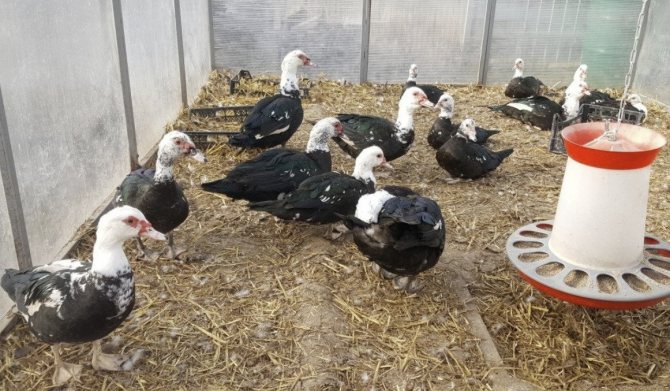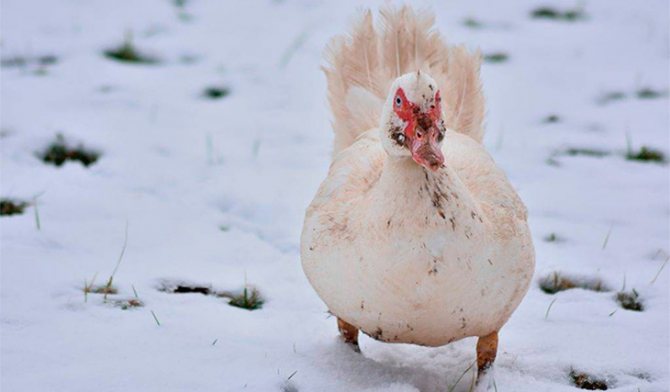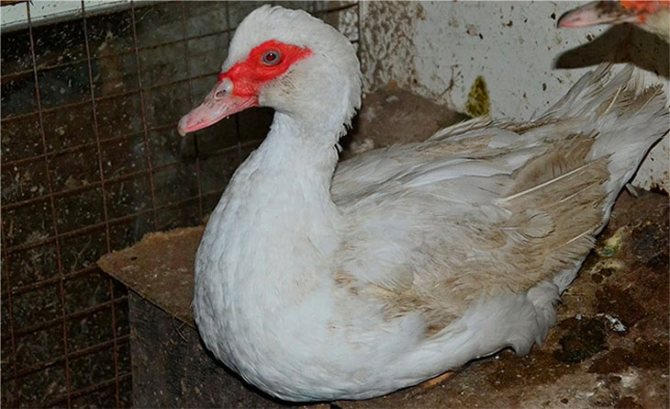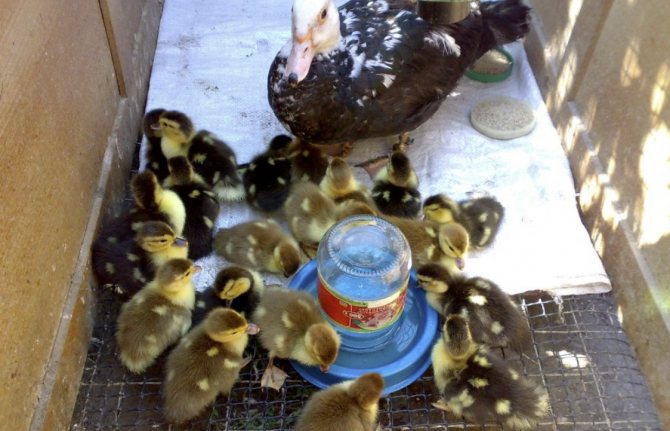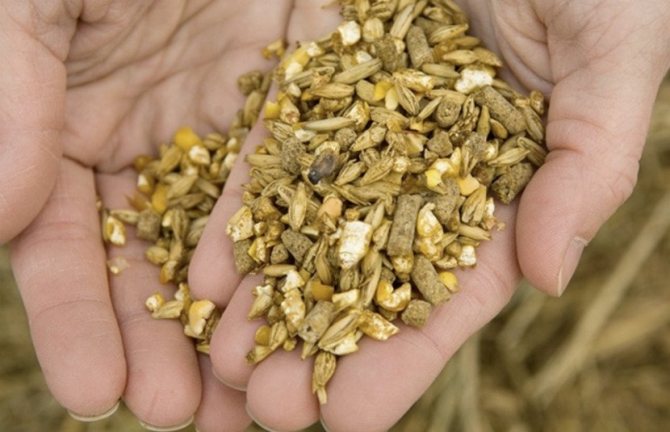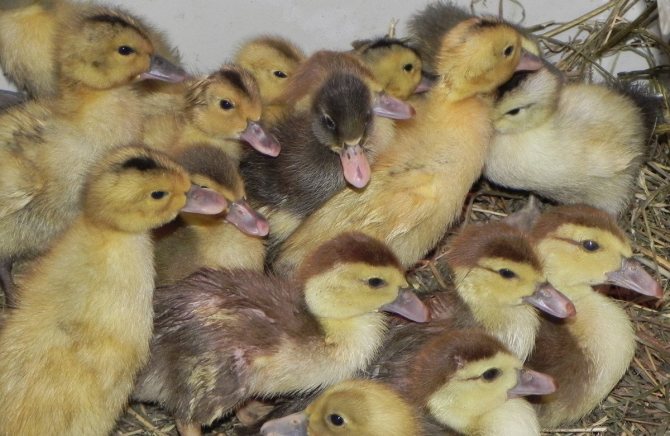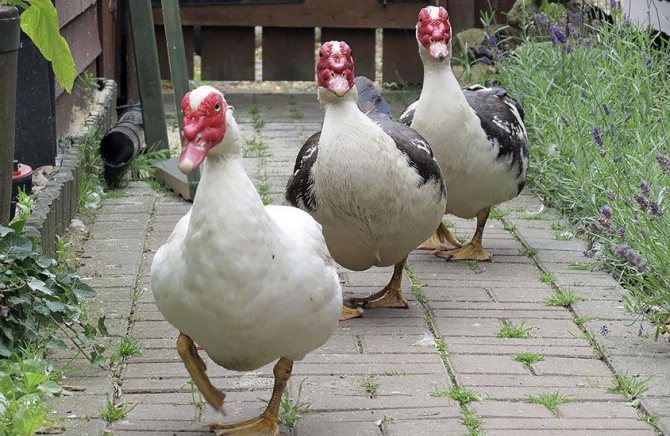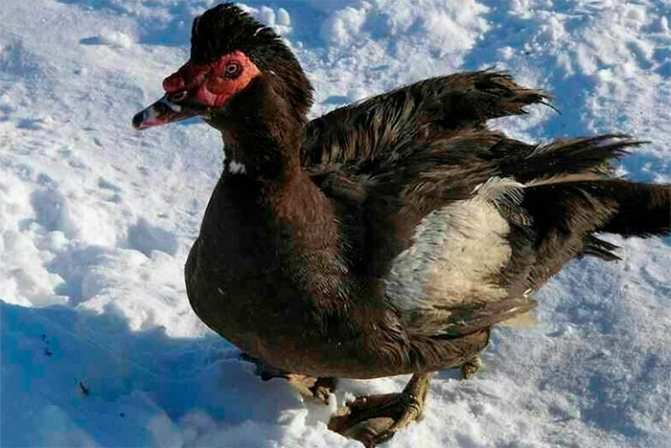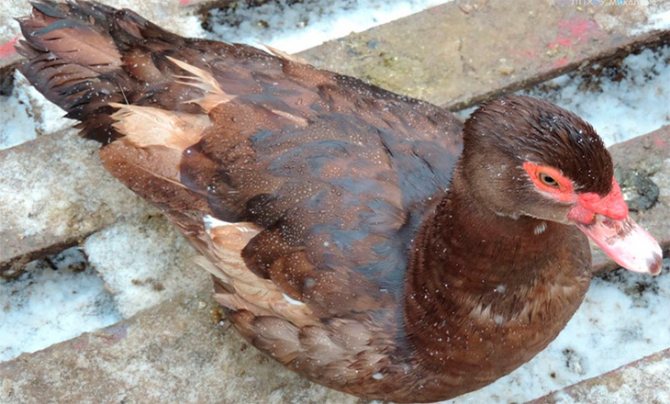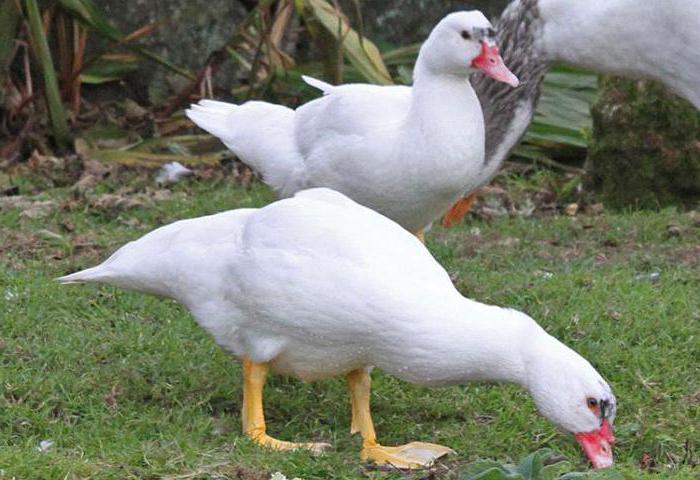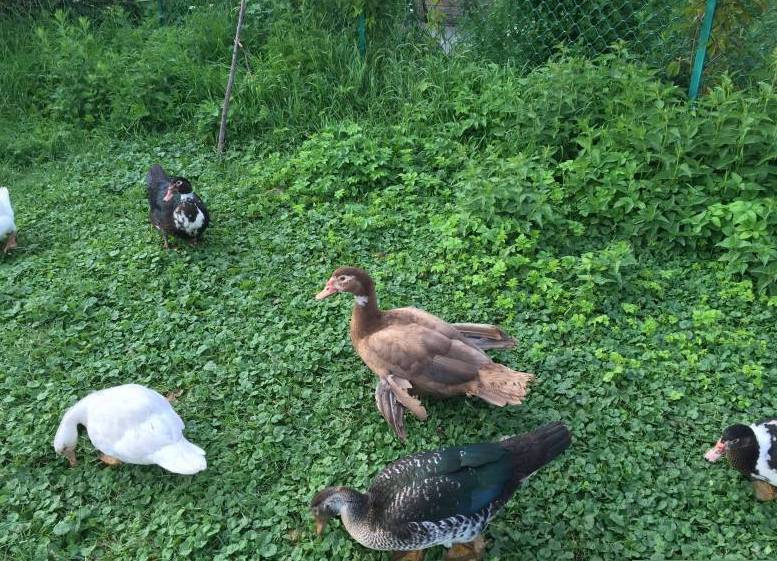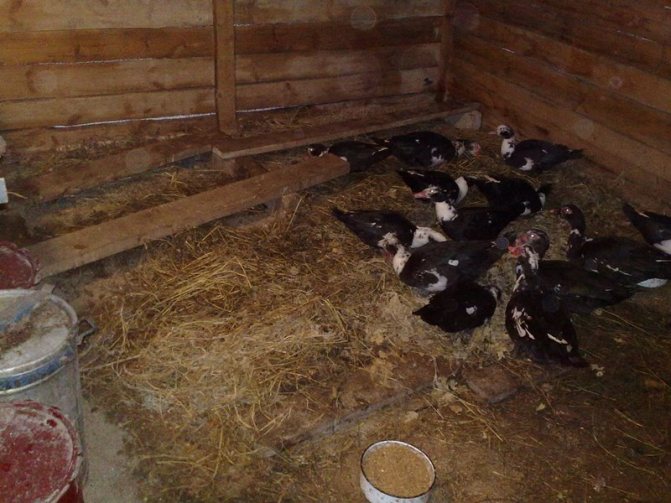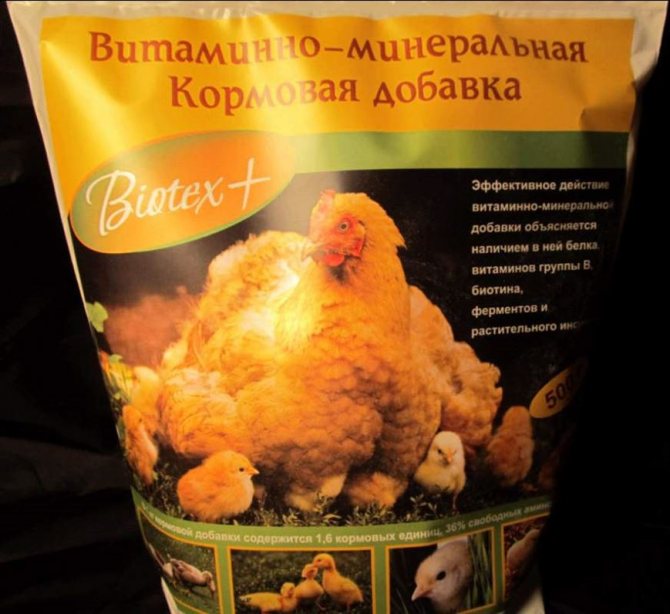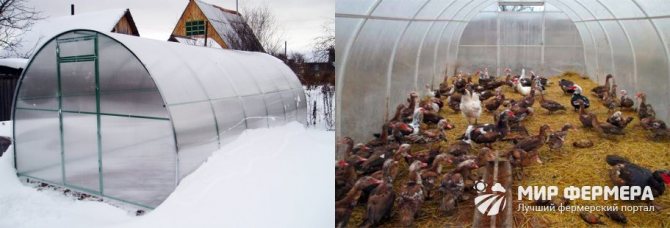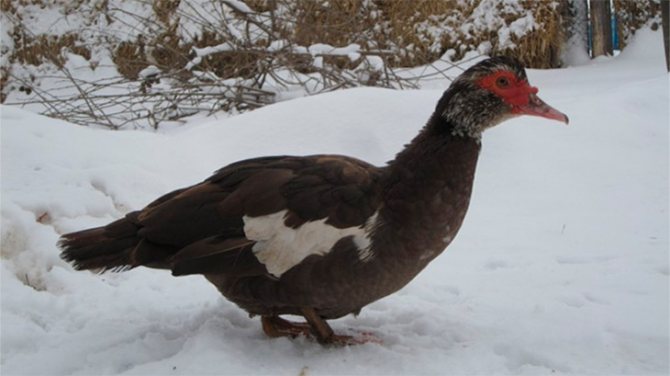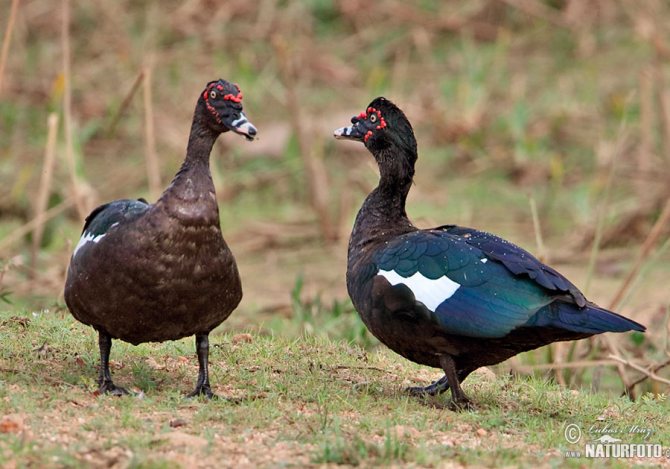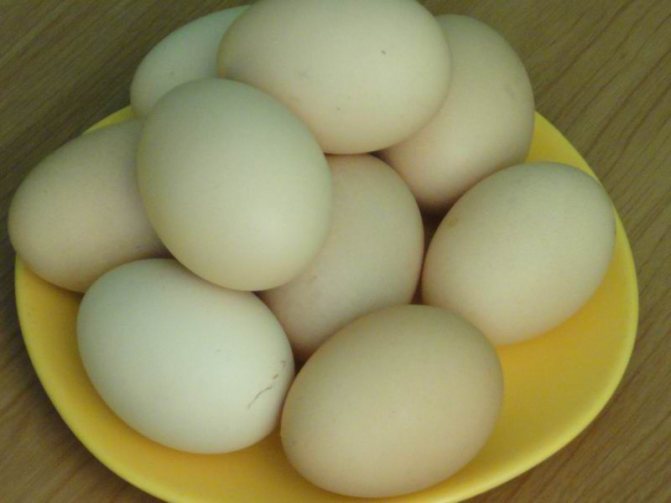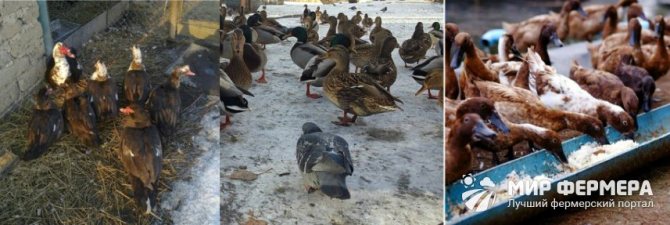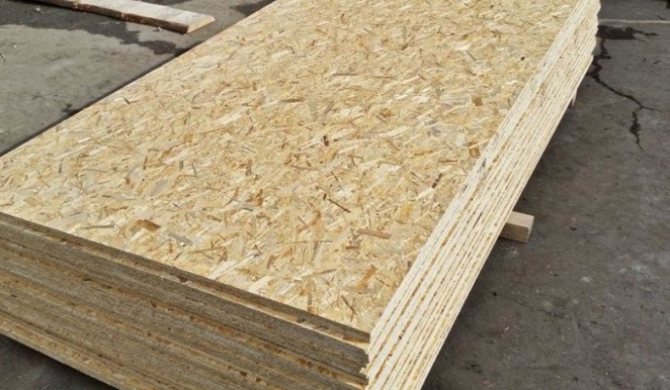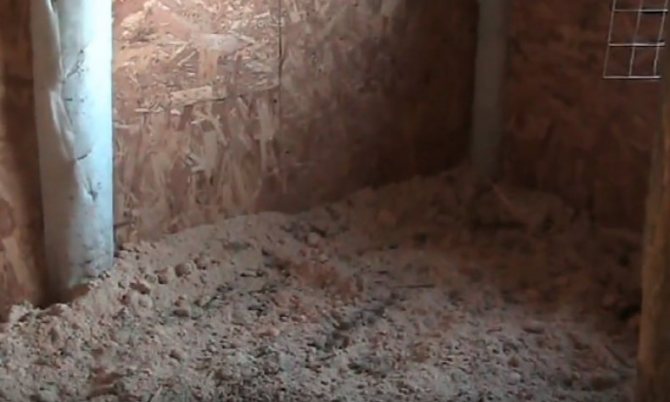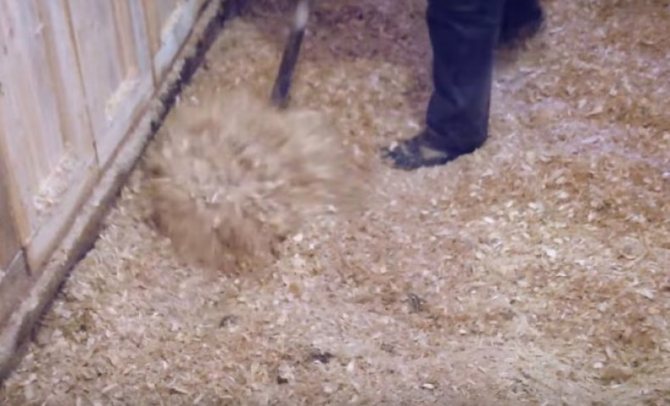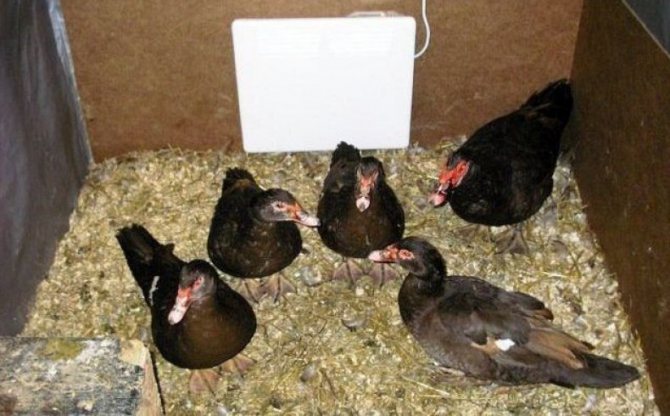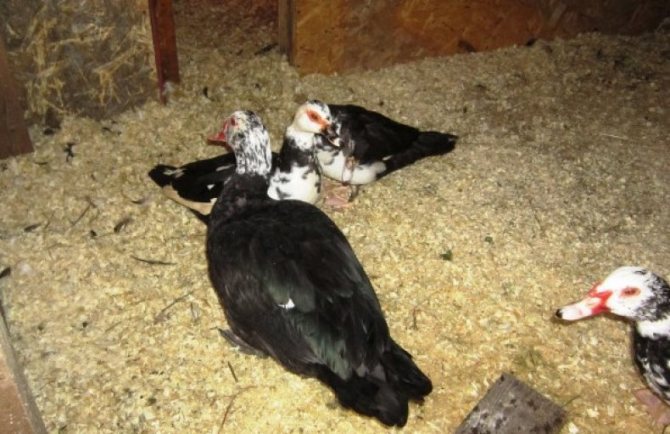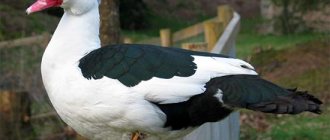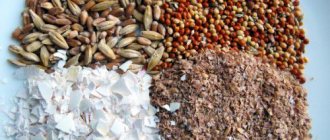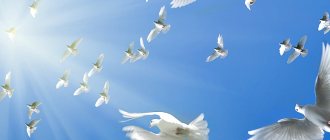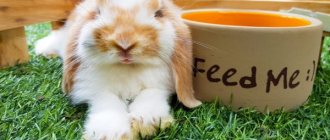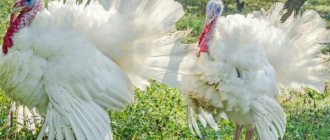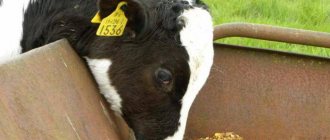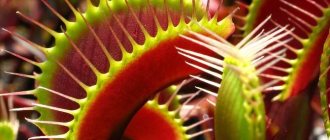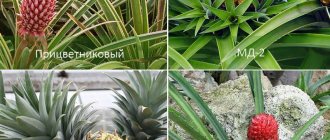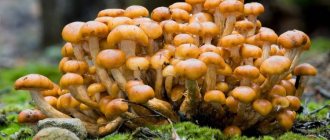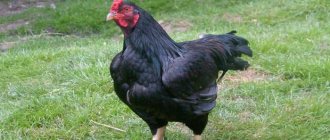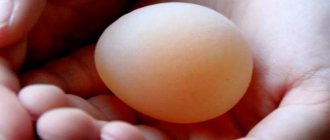The menu of muscovy ducks (mute) is somewhat different from the diet of other varieties of domestic waterfowl. It is closer to the diet of geese, since musks consume a lot of greenery and like to graze in the meadow, rather than swim in the lake, looking for tadpoles and eating algae. Feeding idlers at home is not burdensome and inexpensive, which allows you to get enough tasty lean meat during the summer season.
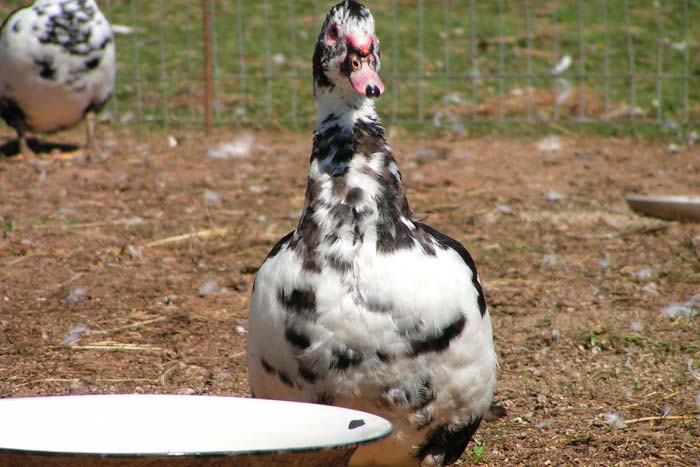
Basic feeding rules
The poultry farmer is faced with the task of creating a diet for the wards in such a way as to fully provide the bird's body with vitamins, proteins, fats and carbohydrates, and minerals.
The main components of the mute menu are grains, vegetables and herbs, animal feed. Indoor female food products should be of high quality, the livestock should not be fed moldy, fermented or rotten food.
Waterfowl assimilates wet food better, that is, mash. In dry form, musks are given only granular feed, which does not become dusty and does not clog the nasal openings in the beak.
The livestock should always have free access to water. The duck drinks down every portion of food eaten and often rinses its beak in water.
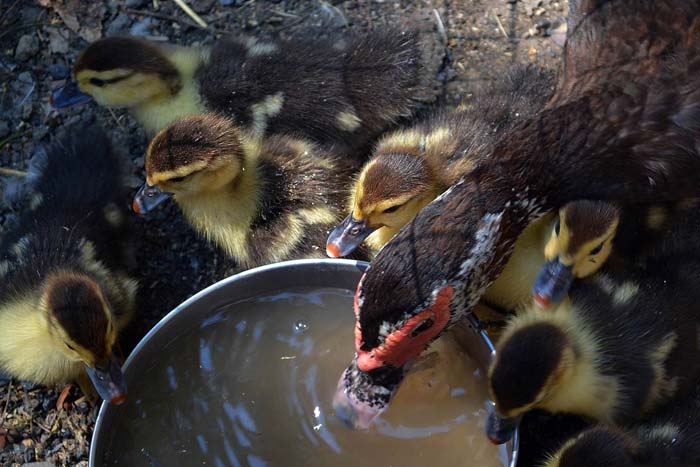

What else should be taken care of in winter
It should be borne in mind that water in a cold winter can freeze or cool down to temperatures unacceptable for Indoor temperatures. Therefore, it is advisable to set heated water nipple drinker... To organize such a system, a heating cable for a heated water supply system is used. It is advisable to additionally pack a nipple drinking bowl with heating in thermal insulation in order to avoid unnecessary heat consumption.
Artificial lighting installed from several electric lamps of 50 watts. Additional lighting will extend the daylight hours for the birds to ensure egg production.
How to feed little Indo-ducks
For chicks, you need to stock up on starter feed (you can use the formula for broiler chicks) or prepare the feed mixture yourself. It is necessary to feed the ducklings with soft and nutritious food with a predominance of the protein component. Since babies are actively growing, they need more energy and protein than adults.
Since birth
Muscovy duck chicks begin to take an interest in food 18–26 hours after hatching, when they are resting and dry under a light bulb. Daily ducklings are fed either with ready-made starting compound feed, or with boiled eggs (chicken, duck, goose, quail) mixed with corn or wheat grits.
The egg in this case imitates protein food (insects, larvae, worms), which chicks receive in natural conditions.
Ducklings actively eat food that they see well. The first portions of compound feed or eggs with groats are poured directly on top of the ducklings' backs. Pieces roll off the backs, chicks grab the moving particles and eat. Later, food can be fed directly to the troughs.
Dry compound feed can be poured once a day. The egg is given in small portions 5-6 times a day.
Starting from the 5th day of a duckling's life, its menu includes:
- dried cottage cheese;
- finely chopped greens;
- grated carrots.
Steamed with boiling water and a swollen egg, wheat are added to the corn grits.
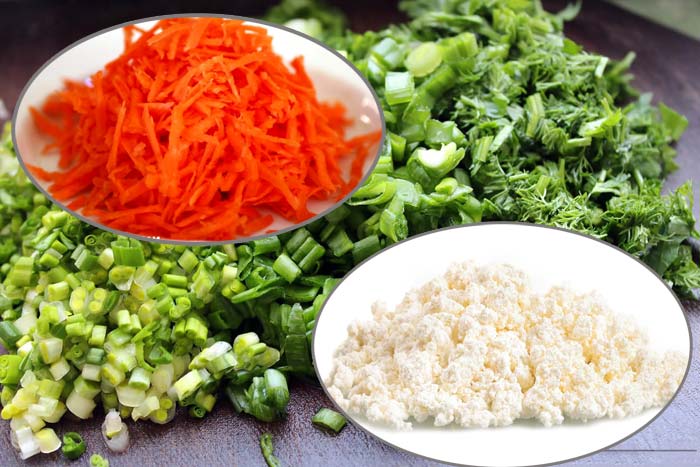

In 20-30 days
Feeding a 3-week indow consists in giving the bird mash of grain, vegetables, milk and fat waste. If the weather permits (the temperature outside does not drop below +20 degrees), the ducklings are driven out to graze, where the bird nibbles the grass at will and catches insects. A pond is not required for mute.
Approximate ration for feeding young animals at 3-5 weeks:
- crushed corn, barley and wheat (in equal proportions) - 90-110 g;
- wheat bran - 15–20 g;
- sunflower cake - 10-15 g;
- feed yeast - 2 g;
- chalk - 3 g;
- salt - 0.2 g
Mix the mash well with whey or skimmed milk, fish or meat broth.
If the bird does not visit grazing, the ducklings are additionally given 50–90 g of grass per day.
Per month
After a month of age, Indo-ducklings begin to feed ducklings ad libitum, without restriction. In addition to the above products, the menu includes boiled potatoes and vegetable peelings, leftover cereals, stews, and soup.
If the bird does not visit the pasture, it is provided with plenty of succulent grass: quinoa, clover, alfalfa, sainfoin, and moss. For better eating, the greens are crushed into 3-5 cm pieces.
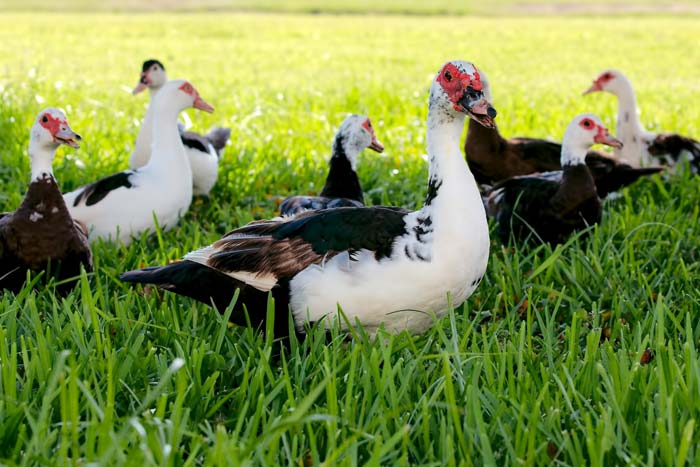

Features winter care
Caring for Indo-Ducks in winter is based on the fact that a bird that is thermophilic by nature, when breeding and keeping it in captivity, does not withstand a decrease in temperature, therefore, it is important to insulate the barn where it is supposed to be kept:
- the room for the winter is equipped with the use of heat-retaining building materials;
- a tree is chosen for the floor, if it is supposed to keep the livestock in a poultry house with concrete floors, it must be covered with a thick layer of hay or sawdust, at least 15 cm;
- the floor level for keeping muscovy ducks in the winter season is raised to 15 cm from the surface of the ground, which will save poultry from freezing paws;
- the cracks in the shed for the winter are cemented or foamed with construction foam;
- the nests are additionally insulated with sawdust or straw.
The lack of good ventilation with the simultaneous impossibility of keeping the barn open and ventilating it in cold weather does not allow to fully maintain the Indoor in winter, maintaining their productive performance at the proper level. Therefore, before the winter season, the poultry house is equipped with a ventilation system, which is made with an exhaust hood - supply or mechanical.
Mechanical ventilation systems are not economically viable for indoor breeding in a poultry house of less than 20 m².
Muscovy ducks are afraid of strong drafts, therefore through windows in the poultry house are made in opposite walls so that they are equipped far from the location of the birds. The distance for the exhaust window from the floor surface is 15-20 cm, for the supply window from the ceiling surface - 10-15 cm. Doors equipped on the ventilation windows allow regulating the air flow.
The most optimal temperature regime that needs to be maintained for keeping indoor dogs in winter conditions is considered to be the interval from 12 ° С to 29 ° С. With a decrease in the degree on the thermometer below 12 ° C, productivity decreases, and at temperatures below -5 ° C, birds freeze their paws.
Keeping the temperature regime at the required level in the process of caring for musky ducks allows the installation of heating devices, which are chosen as the following:
- incandescent lamps capable of raising the temperature by 1-3 ° C;
- stove stoves, heating the air additionally by 12-15 ° С for each hour of operation;
- electric heaters.
For winter maintenance, spacious rooms are suitable, for 3 heads there is 2 m².
Feeding Indo-Dogs at Home
The musky species of ducks eats everything that a common bird eats:
- seeds and grains of cereals - corn, wheat, triticale, sorghum, barley, oats, millet;
- greens (meadow and leguminous grass, garden weeds) or hay;
- vegetables - beets, pumpkin, carrots, zucchini and cucumbers;
- fruits - a drop of apples, pears, berries;
- potatoes.
To save money when fattening, they use wastes from the milling industry (bran, flour), cake and fuse (sunflower oil sediment), brewer's grains (malted barley), whey and reverse.
Ducks willingly eat small fish, daphnia and duckweed collected on the pond. As a protein supplement, they can be given minced meat and bone, blood, slaughterhouse waste.
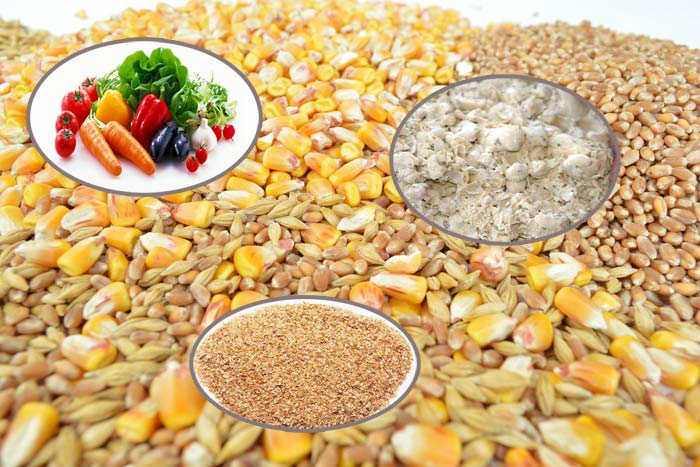

Code of practice
Indo-duck should be fed 2-3 times a day, or dry food should be left in the trough all the time. Unlike chickens, ducks have a small goiter capacity and are forced to spend almost all their free time eating food.
Clean water is placed next to the feeders, remembering that the bird needs to drink food and rinse its beak.
Feeding rates for Indo-Ducks at home depend on the method of keeping (grazing or not) and the physiological state of the bird (dormancy, egg-laying, period of active growth). On average, for each adult, they consume from 120 to 200 g of grain feed per day.
Complex diet
Feeding muscovy ducks at home without the use of special compound feed requires time from the poultry farmer to prepare mixtures, but it will save and dispose of food waste from the farm.
The diet is based on a crushed grain mixture of corn, wheat, barley and oats, where the components are taken in equal proportions.
Corn is sometimes substituted with peas if they can be purchased at a lower price.
To this mixture add:
- cake or sunflower meal - 5-10 g per duck;
- feed yeast - 2–4 g;
- fish meal or meat and bone meal - 2–6 g;
- wheat bran - 10–20 g;
- salt - 0.4 g;
- chalk, shell - 2-9 g.
The resulting mixture is well mixed and stored in a cool and dark dry place. Before serving the bird, the mixture is moistened with water, milk whey or broth.


When boiled potatoes and food waste are added to the mash, the proportion of grain is halved. Fresh vegetables are rich in vitamins and fiber, but they have little energy, so they are given about 50-80 g for each duck, without reducing the amount of cereals. The greens are chopped and set separately, ad libitum, if the bird does not visit the grazing.
Simple diet
It is not easy to prepare feed for a large number of Indo-Ducks on their own, so farmers resort to using ready-made mixtures. Complete feed for waterfowl does not require the introduction of any additives, except for greens. It contains everything necessary for the growth and development of the bird. The existing feed formulations are divided into groups:
- Start or PC - 21 - from 0 to 20 days;
- Growth or PC - 22 - from 21 to 55 days;
- Finish or PC - 23 - from 56 days to the bottom;
- Adult feed - PC - 20.
The composition of each species differs in nutritional value, the amount of digestible protein, a set of vitamins and additives. The feed is small granules or crumbs, which are fed dry according to the recommended rates.
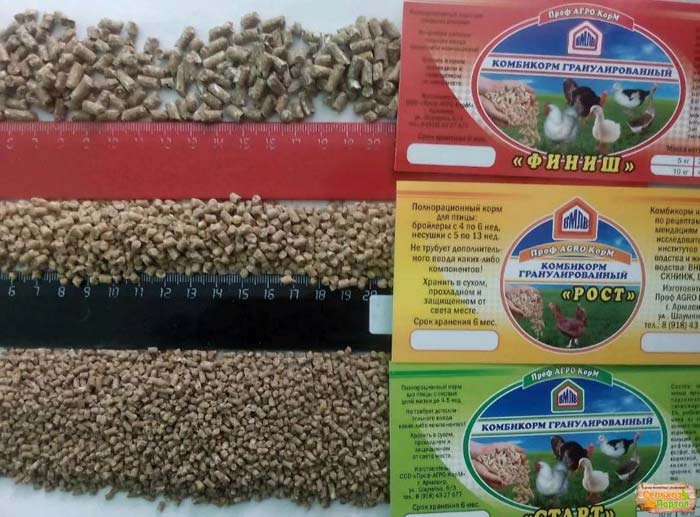

Meals in the winter
Particular attention should be paid to vitamins when feeding poultry in winter. In winter, ducks are deprived of the opportunity to graze on the grass and be in the sun. The composition of the mash is introduced:
- fresh vegetables containing vitamins C and A - cabbage, carrots, pumpkin;
- hay dust or grass meal of nettle or alfalfa;
- sprouted grain;
- premix.
Sometimes the bird is given a rosehip broth or a hay infusion rich in vitamins instead of plain water for drinking.
Top dressing recipe
It is not difficult to prepare a vitamin supplement for an Indo-woman at home. There are some simple recipes.
- Sprouted grain. Whole, washed grain of wheat, oats or barley is poured with warm water for several hours. When the grain swells, the excess water is drained, and the grain is scattered in a layer of 1.5 cm on pallets. Cover with a towel on top and leave for 1-2 days in a warm place.The grain is fed to the bird when sprouts up to 10 mm long appear on it.
- Nettle flour. Nettle is rich in vitamins, especially ascorbic acid, plus it grows in abundance everywhere. The grass is mowed until the stems are coarse and dried in the shade. Dry nettles are crushed in a grass cutter or simply rubbed with greens with hands in mittens. Grass flour is sieved from the large particles of the stems and stored in bags in a dry place.
- Grain yeast. This additive helps to accelerate the growth of poultry, increase the weight of the egg during the laying period. To yeast 1 kg of crushed shreds, you will need 3 liters of water and 0.5 tsp of baker's yeast. The grain is poured with hot water and mixed thoroughly. When the mass has cooled to 40–45 degrees, yeast is added and the grain is mixed. Yeast is cooked for 10-12 hours. The food should be kept in a warm place, it is advisable to mix the grain 3-4 times.
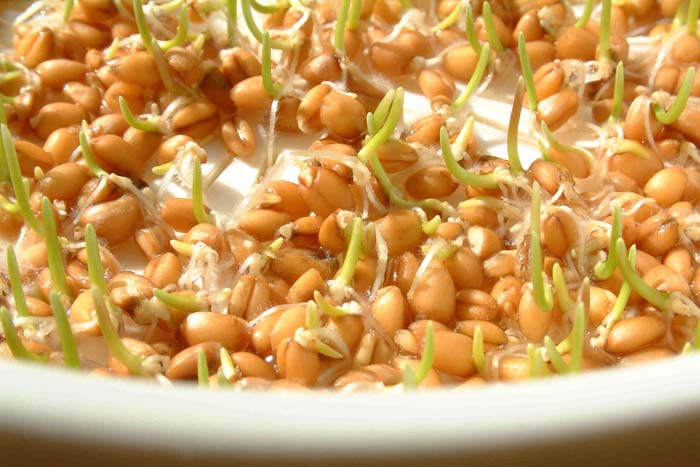

Sprouted greens
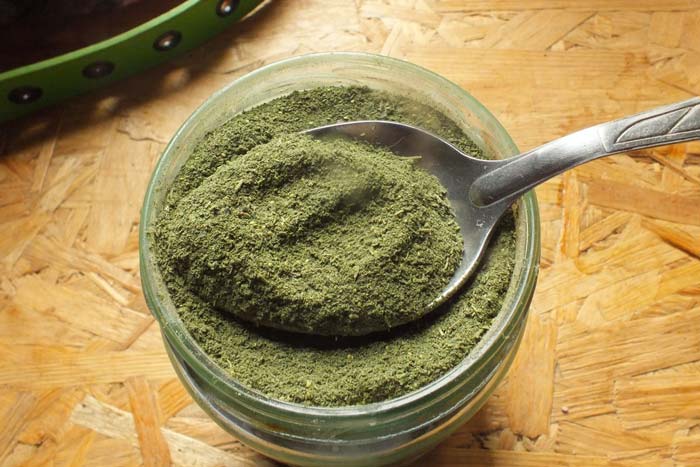

Nettle flour
How to add top dressing
Any additives must be correctly added to the mash: immediately before giving the bird. The grain mass must be completely cooled. Grass flour is given 10–40 g per head, sprouted grain - 10 g, yeast grain - 5–9 g per individual.
Why Breed Muscovy Ducks
Growing domestic mute bugs is a profitable business. This is due to the fact that they graze on their own, do not require a large amount of purchased feed.
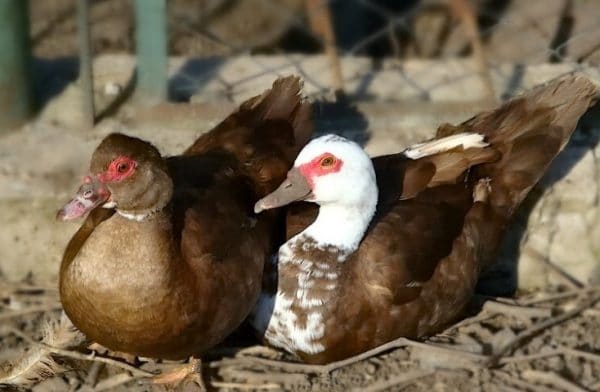

Growing domestic mutees is a profitable business
It is easy to grow this breed: in the summer they need a small rate, and in the winter they need a warm barn. Ducks grow quickly and gain weight. Poultry is cut at 12-14 weeks, until molt.
Advantages of musky ducks:
- unpretentious in food;
- calm by nature, do not arrange fights with other poultry;
- they do without large reservoirs, they just need to put water in a small container or open access to river water;
- not prone to disease.
In winter, they need a small shed at the rate of 3 individuals per 1 m². The room must be heated and kept dry.
Indo-woman rushes twice a year - in spring and autumn. During this time, 80 to 100 eggs are collected. They are large in size and reach 80 g. A brood duck incubates them for 30-34 days, and the number of dead chicks is 7-10% of the total clutch.
The meat is healthy and low-fat, it is believed that it is softer and softer than that of an ordinary duck. The weight of the male is 5-6 kg, and that of the female is 2.5-3.5 kg.
Interesting! In Europe, it is customary to cook foie gras from poultry liver.
How to feed an Indoor dog for forced molt
To cause unscheduled molting in the livestock, not only the diet of the ducks, but also the conditions of keeping the poultry, is drastically changed:
- reduce lighting to 3-4 hours a day, including it only during feeding;
- remove all vitamin and protein supplements from the menu, leaving one whole grain.
They feed the musky bird once a day, giving out 100 g of oats per head, water should be freely available at all times. Twice a week, the bird is not fed grain at all, offering only a little greenery.
Starting from the 20th day, oats are gradually replaced with compound feed or grain mixture with additives. By the 35th day, the daily feed rate is increased to 140 g per individual, by the 45th day - up to 200 g. Daylight hours are increased by 10 minutes a day, bringing it to 14 hours a day.
Arrangement of nests
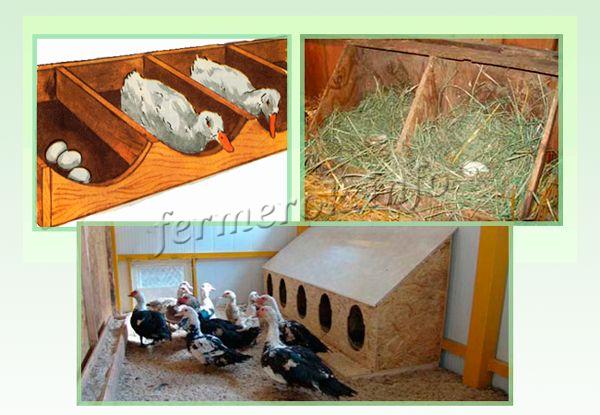

Duck nesting
The bird does not need roosts, but with nests is another matter. If keeping ducks at home involves regular slaughter, you may not need to make nests, but if you need to get high-quality eggs from the bird or for them to hatch them, it is recommended to make nests.
The number of nests can be made small, as a rule, two ducks can get along on one. Sizes, convenient for poultry: 60-70 - width, 25 - height, 10 - threshold height.You can make nests from any available material: a wooden box, an old barrel made of wood or metal, plastic containers, pallets, baskets, and so on.
Inside, the nests are filled with bedding, which must be changed from time to time. It is necessary to place the nests at a short distance so that the “neighbors” cannot pinch each other. They are usually placed in a row near the side wall or in the corner of the room so that they are difficult to see. Birds do not like to be seen while incubating their eggs. Feeders and drinkers are located nearby so that the females do not go far from the nests.
Place the nests in the darkest corners of the room. It should be borne in mind that there should be free access to the nest for collecting eggs and changing the litter.
Plywood is most often used as a material for making nests. A small box is made of it, 50 cm high. The width and length are 40 and 50 cm, respectively. In the front part, make a small nut (no more than 8 cm) so that the duck can freely step over it, and the eggs do not roll out of the nest (Figure 8).


Figure 8. Drawing and photo of nests for ducks
The number of nests is calculated by the number of individuals in the herd. The optimal ratio is 1: 3 (one nest for three ducks). It is important to take into account that birds lay eggs mainly at night and in the early morning, therefore, it is better to collect them at the beginning of the day.
If the ducks are planned to be fattened in spring and summer, they can be kept in light board buildings or under sheds. For year-round maintenance, it is necessary to equip more solid buildings with a sufficient number of windows and external insulation. The building site must be dry and drainage trenches must be dug around it to drain rainwater.


Figure 9. Drawing of the house and its equipment inside and outside
A solarium for walking with a fence of 0.6 meters is equipped in front of the poultry house. If the climate is hot and dry, a small reservoir is also equipped in the solarium, and so that the birds can freely go out to the walking area, a special manhole is made from the poultry house, the perimeter of which is insulated. Examples of duckhouse and solarium equipment are shown in Figure 9.
Ducklings to be slaughtered for meat can be raised on limited water runs in the summer. A shed will be equipped near the reservoir to protect the chicks from rain and sun.
What you need to know about intensive feeding
Intensive refers to feeding when the poultry is given food with a high energy value, containing a lot of digestible protein (more than 20 g). Such food promotes accelerated growth of muscle mass, young animals at the age of 5 to 9 weeks respond well to it.
For intensive fattening, corn and barley, oilcakes, dairy products, and greens of legumes are used. Feeding rates are selected individually, focusing on the behavior of the bird and the fullness of the feeders. Ideally, musks shouldn't feel hungry.
The approximate consumption rate of grain mixture for one duck at the age of 7 weeks is 160 g, cake - 10 g, greens - ad libitum.
Feeding Indo-Ducks is an easier task than making a diet for common varieties. Muscovy ducks do not need a lot of aquatic vegetation. Birds will gain weight and carry well if they are fed grain and herbs in a mash. For a large livestock, it is more rational to use special compound feeds, selected in accordance with age.
Organization of a walking place
Caring for muscovy ducks in the cold season is impossible without regular walking, which should be organized according to certain rules. The walking area must be protected from sharp winds and precipitation. The best option to protect from bad weather would be a canopy or greenhouse.
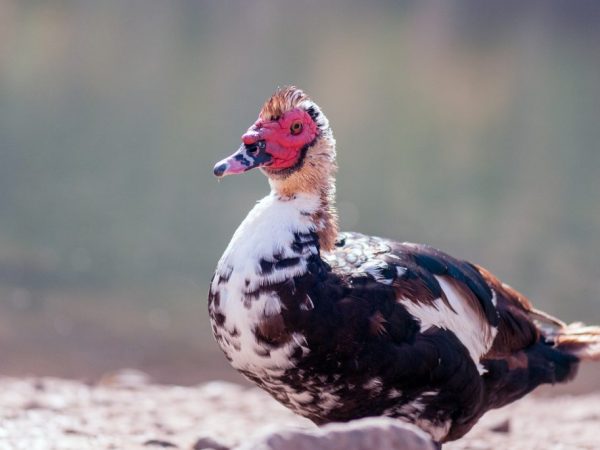

Indo-women need to insulate the room for the winter, because they are not used to low temperatures and can freeze their paws, catch a cold and even die
Before the release of musk ducks on a walking open area, it is preliminarily cleaned of snow cover.
The duration of winter walks is limited by:
- at –15 ° С - no more than 2 hours;
- at –10 ° С - no longer than 4 hours;
- at 0 ° C and above - no longer than 8 hours.
In conditions of walking in a greenhouse, the duration of walks for indoor dogs can be increased by 1-2 hours.
It is worth limiting the indoor access to open water bodies in winter, because it will be safe to stay on the water only when it is well warmed up.
The need to install heating devices
Keeping homemade musk ducklings in winter requires the farmer to control the indoor temperature. If the floor is covered with straw or sawdust and there are no drafts inside the barn, favorable conditions for the growth and productivity of birds are observed in the temperature range from 12 to 29 ° C. If the thermometer shows a lower temperature, their productivity decreases. At temperatures below -5 ° C, frostbite of the extremities is possible.
It is not difficult to save birds from frost if:
- Heat the barn with incandescent lamps.
- Heat the barn with a potbelly stove.
- Use electric heaters for heating.
- Use specialized heaters.
If you want to raise the air temperature by 1-3 °, ordinary bulbs are suitable for heating the room. If you hang them in the barn in the amount of 3-4 pieces, they will be enough to create optimal conditions for the life of birds.
The potbelly stove is considered to be more effective heating means. In one room, such a stove is capable of increasing the air temperature by 12-15 ° during its hour of operation. But do not forget about the safety of the Indo-girls themselves - the stove should be fenced off from birds.
Indoor content in winter
Walking
Like any birds, Indo-girls must walk, breathe air. Undoubtedly, there are no special problems with walking ducks in summer, but in winter many poultry farmers ask themselves the question: "Is it possible to walk Indo-ducks in winter and how to do it?"
In order to keep musky ducks from freezing in winter, you should properly equip the yard for walking. The best option would be if you place it on the south side of the house and enclose it with a high netting of at least two meters or a fence.
In the pen, you first need to remove the snow and all sharp-stabbing objects, and also lay a bedding of straw or sawdust so that the ducks do not hurt or frostbitten their legs.
For the duration of the walk, drinkers and feeders should also be taken out to the pen. Ash baths in the fresh air will also be very useful for birds. But it is highly discouraged to admit them to reservoirs and puddles, as this can lead to frostbite of the paws and death.
What is the temperature for walking
Organizing a duck yard is very important. Ducks cannot walk on cold ground and snow, as their paws will freeze. Therefore, the winter walking yard resembles greenhouse or greenhouse... It must be protected from wind, rain and snow. It is advisable to locate it on the south side of the house. There should be a layer of bedding at least 40 cm thick on the ground of the yard. If the air temperature drops below -5 ° С, then it is impossible to let the indoor dog into the yard because of the risk of frostbite paws.
